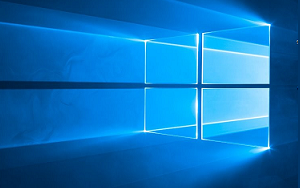Discover how to reset Windows 11 to its factory settings with this detailed guide. Learn the step-by-step process to restore your PC, ensuring a fresh start while preserving important data.
Introduction
Resetting your Windows 11 PC to its factory settings can be a crucial step in resolving persistent software issues, enhancing performance, or preparing the device for a new user. This process allows you to start fresh while maintaining control over your personal data. In this guide, we will walk you through the step-by-step process of resetting Windows 11, providing tips to ensure data safety and optimal results.
Why Reset Windows 11?
Before diving into the reset process, it's essential to understand the reasons behind it. Here are some common scenarios where a factory reset might be beneficial:
- System Performance Issues: Over time, your PC may become sluggish due to accumulated software and settings changes. A reset can help restore its original speed.
- Persistent Errors: If you're experiencing continuous software errors or crashes, resetting can eliminate these issues by restoring default settings.
- Preparing for Sale or Transfer: If you plan to sell or give away your PC, a factory reset ensures that all personal data is removed.
- Virus or Malware Removal: In cases where your system is compromised, resetting can effectively remove harmful software.
Pre-Reset Preparations
Before proceeding with a factory reset, it's crucial to take the following preparatory steps to safeguard your data and settings:
- Backup Important Data: Use an external hard drive, cloud storage, or a reliable backup solution to save essential files, documents, and media.
- Note Down Software Licenses: Keep a record of any software licenses or product keys that you may need to reinstall applications after the reset.
- Disconnect External Devices: Unplug any non-essential external devices such as printers, USB drives, and monitors to avoid potential issues during the reset process.
- Ensure Sufficient Power: Connect your PC to a power source to prevent interruptions due to power loss during the reset.
How to Reset Windows 11
Follow these detailed steps to reset your Windows 11 PC to factory settings:
Step 1: Access the Settings Menu
- Click on the Start button in the taskbar.
- Select Settings from the Start menu or press Windows + I on your keyboard to open the Settings app directly.
Step 2: Navigate to Recovery Options
- In the Settings window, click on System from the left-hand sidebar.
- Scroll down and select Recovery.
Step 3: Choose Reset Option
- Under the Recovery section, find the Reset this PC option and click on Get started.
- You will be presented with two options:
- Keep my files: This option will remove all apps and settings but retain your personal files.
- Remove everything: Use this option to completely erase all data, making it ideal for selling or transferring the PC.
Step 4: Follow the On-Screen Instructions
- After selecting your preferred reset option, follow the on-screen instructions to proceed.
- Choose whether to download Windows from the cloud or use the local reinstall option. Cloud download requires internet access and can be more up-to-date.
- Review the changes that will be made, and if you are ready, click Next to continue.
Step 5: Initiate the Reset
- Click Reset to begin the process. Your PC will restart, and the reset procedure will commence.
- The duration of the reset may vary depending on your system specifications and the selected reset options.
Post-Reset Setup
Once the reset is complete, your Windows 11 PC will restart, and you will need to perform initial setup steps:
- Language and Region Selection: Choose your preferred language and region settings.
- Network Connection: Connect to a Wi-Fi or Ethernet network to proceed with the setup.
- Microsoft Account: Sign in with your Microsoft account to sync settings and access online services, or create a new account if necessary.
- Privacy Settings: Review and customize your privacy settings as per your preference.
Reinstalling Applications
After completing the reset and setup, you may need to reinstall applications that you frequently use. Refer to your software licenses and product keys to ensure a smooth reinstallation process.
Conclusion
Resetting Windows 11 to factory settings is a valuable tool for troubleshooting and maintaining optimum system performance. By following this comprehensive guide, you can effectively reset your PC, ensuring a fresh start while preserving important data. Whether you're dealing with persistent issues or preparing for a device handover, these steps will help you achieve a successful reset.







